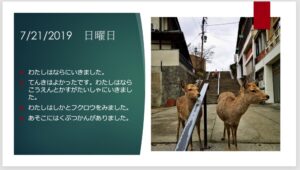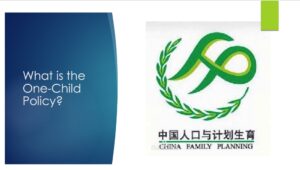In PAAS 138 last summer, our instructor gave us a final assignment worth about 10% to do, which was to make a PPT with any topic by using elementary Japanese learned in this lesson. I made the PPT about my trip to Japan in 2019, but I was worried that my immature language application would make some details difficult to understand, thus, I inserted pictures corresponding to the text on the PPT on each page. Fortunately, this had achieved quite good results, some concrete contents that could not be expressed clearly were also presented from the pictures. Combined with the reading materials provided this week, I think this can be an example of me observed the Temporal Contiguity Principle.

One page from my PPT in PAAS138
On the contrary, I had also broken one of the multimedia learning principles once, which was I didn’t observe the Coherence Principle in my ECON225 class last semester. The aim of the Coherence Principle is to use original materials instead of extraneous materials. In order to better present what I said about current affairs and politics, I quoted several extraneous materials, such as some logos and links, some complex numbers had also included in the text(but not in the PowerPoint, only included in my speech). But otherwise, this also broke the Temporal Contiguity Principle, it didn’t necessarily give the audience more direct access to information, so it may not be the best option for a presentation.

One page from my PPT in ECON 225
Leave a Reply
You must be logged in to post a comment.